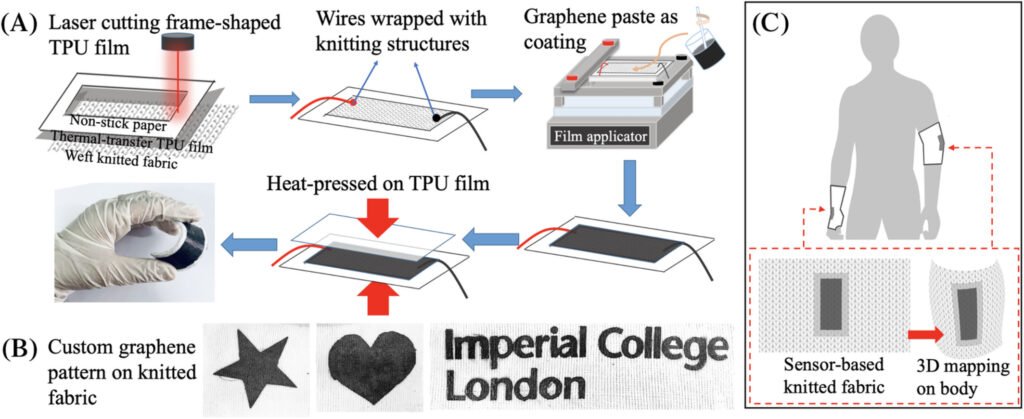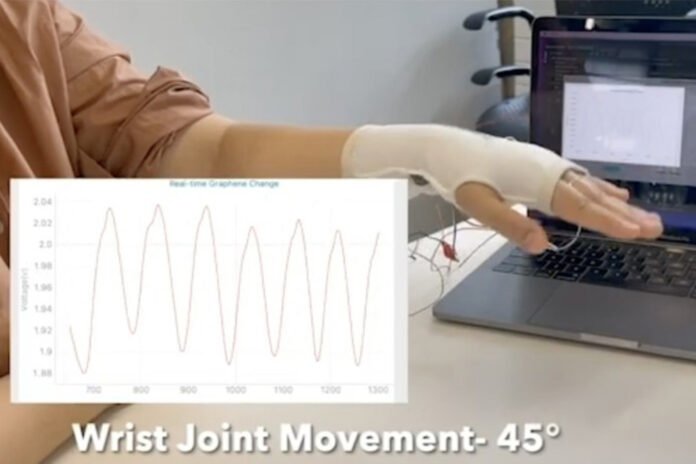Researchers from the UK’s Imperial College London have developed graphene-based flexible clothing sensors that can detect body movement, with potential applications in injury rehabilitation, human-computer interaction systems, and athletic training. Designing and producing highly accurate and reliable wearable sensors has become an important research topic in human motion monitoring.
Traditional strain sensors made of metal or inorganic semiconductors exhibit poor flexibility with a narrow sensing range compared to flexible sensors. Furthermore, the complicated and expensive fabrication procedures also limit their widespread applications in wearable devices. Sensors for human motion monitoring need to be flexible and stretchable to adapt to the body with high measurement accuracy. Therefore, flexible strain sensors have attracted extensive attention in both industry and academic fields due to their outstanding flexibility and stretchability.

The UK researchers’ sensors are composite sensors that exhibit high sensitivity (GF = 498), wide sensing range (0%–293%), excellent reliability, and stability, which only shows a 5% deviation after 10,000 cycles of stretching under 5% strain. In addition, the graphene-based textile composite sensor thermalized by TPU film can also maintain high stability after long-term UV irradiation and multiple washing cycles. When integrated into various wearable devices, our composite sensor can detect a wide range of human body motions accurately, as well as subtle physiological signals, exhibiting great potential in incorporating into wearable monitoring devices.
Smart textiles are the future! Such sensors could change how we interact with our clothes and their functionality.



